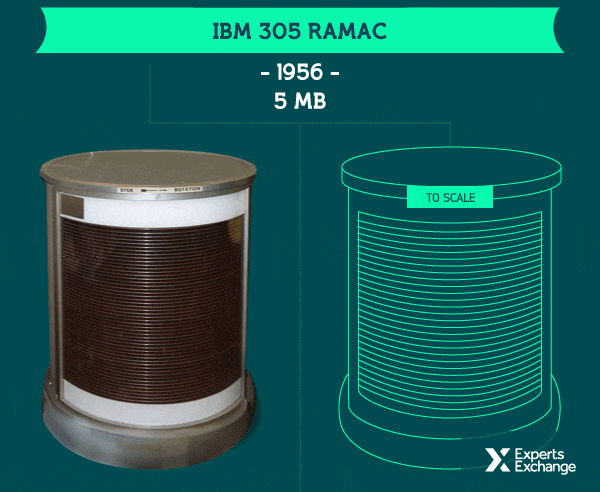Infographic: Trillion-Fold Rise in Computing Puts a 1985 Supercomputer on Our Wrists

Share
You’ve probably heard we carry the equivalent of a 1980s supercomputer around in our pockets. It's a pretty amazing thing to consider. And, as it turns out, it's already outdated. Moore’s Law moves fast.
According to an astonishing infographic (below) documenting the trillion-fold increase in computing performance since 1956, it’s true that an iPhone 4 was roughly equivalent to a hefty Cray-2 supercomputer from 1985. Now, if you so desire, you could wear that Cray-2 on your wrist (Apple Watch). Meanwhile, a Samsung Galaxy S6 is the equivalent of 18 Cray-2 supercomputers in your pocket.
Storage too has risen exponentially, hard drives shrinking and their capacity moving skyward. In the 80s we measured storage in megabytes, today we measure it in terabytes. That's millions of times more storage in the palm of your hand. (Watch the GIF above the infographic to see the transformation of hard disks.)
The infographic was compiled by the Experts Exchange, a network of IT professionals. Check out the full post here for more mind-bending computing comparisons and the research methodology behind them.
Be Part of the Future
Sign up to receive top stories about groundbreaking technologies and visionary thinkers from SingularityHub.


Jason is editorial director at SingularityHub. He researched and wrote about finance and economics before moving on to science and technology. He's curious about pretty much everything, but especially loves learning about and sharing big ideas and advances in artificial intelligence, computing, robotics, biotech, neuroscience, and space.
Related Articles

Data Centers in Space: Will 2027 Really Be the Year AI Goes to Orbit?

How Scientists Are Growing Computers From Human Brain Cells—and Why They Want to Keep Doing It

Scientists Say We Need a Circular Space Economy to Avoid Trashing Orbit
What we’re reading


